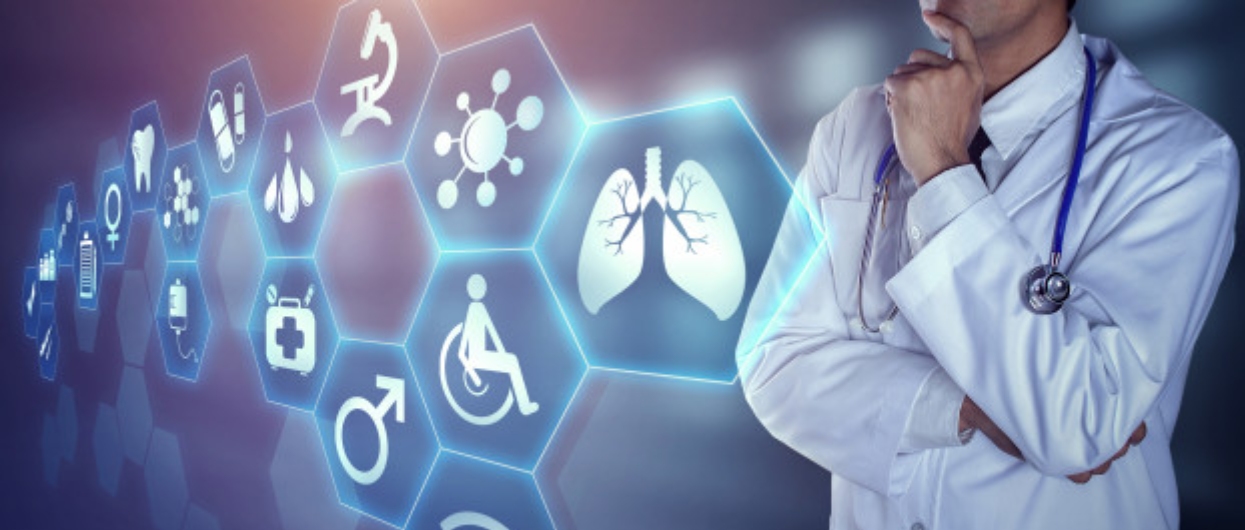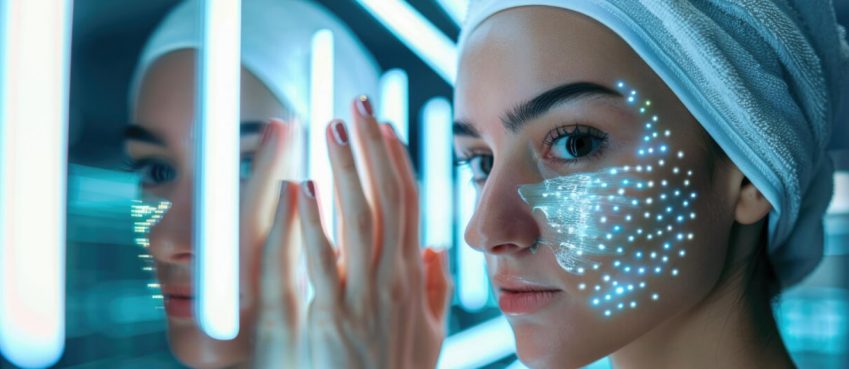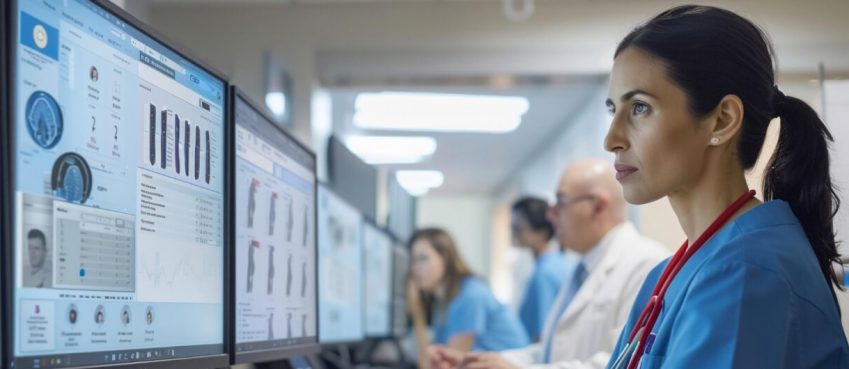
Health informatics or Health Information System is the recent advancements of technology wherein this resource is deployed for enhancing healthcare facilities, organization and management of health records, and ameliorate various outcomes of healthcare technology.
It deals with the utilization of various resources, methods, and devices for the utilization of information related to health and medicine. The field of health information systems is rapidly transforming with the rapid emergence of advanced technology.
Technological Contribution to Healthcare Informatics
The modernization of healthcare is driven by the rising standards of healthcare facilities and subsequent costs involved with it. There is a requirement of high-quality and innovative technology as the incidence of chronic illness is increasing that requires long-term and trustworthy health care.
The healthcare developers are constantly implementing technological innovations including robotics, the internet of things, and artificial intelligence for automating the process and bringing huge reforms in the healthcare world. Here are five prominent technological contributions in the area of healthcare informatics:
5 Emerging Technologies and their Impact on Health Informatics
Artificial Intelligence in Healthcare Informatics
Artificial intelligence is the advanced technology used to mimic the cognitive process of human beings. This technology is designed to empower humans to increase healthcare facilities. Healthcare informatics utilizes this technology for analyzing and interpreting large volumes of clinical data with deep learning and multi-layer networking.
Hospitals deploy Artificial intelligence for data mining of the healthcare information systems to enhance the patient care facilities and techniques implemented by the professionals. The scanning and medical procedures become more convenient with the implementation of AI and it also helps in clinical trials and subsequent data management for drug discovery and testing.
Also read: 7 Best Instagram Font Generators (Apps & Websites)
Robotics in Healthcare Information System
The designing and engineering of robotic machines for performing fully or partially-automated cognitive functions of humans is essential for healthcare facilities. The robotic instruments and tools are useful in carrying out surgical procedures quite effectively.
They contain three-dimensional and high definition software for power imaging that is useful for carrying out critical operations quite smoothly.
Apart from that, robotics can be utilized for rehabilitating or enhancing patient capabilities. The automated information system can also be used for data management of patient records and medical history. Effective patient management can be done with the help of robotics.
3D Bioprinting of Medical Sciences
3D bioprinting is an advanced printing of solid three-dimensional objects from digital files with the help of an additive. These additives are liquid metals, epoxy resins, polymers, ceramics, and living cells used for bioprinting human tissue cells.
This technology deploys a stem cell bio link and can be useful for designing 3D printed drugs, specially designed as per patient requirements. The molecular level of study for various diseases should be done with the help of 3D printing before the discovery of its drugs.
Internet of Medical Things
This approach uses technology in the form of wearable devices for scanning and body imaging. The internet of things for the medicine world enables physicians to measure common medical parameters with these wearable devices, such as blood pressure, temperature, pulse rate, and glucose level inside the body.
Various mobile applications and devices are discovered that can be preventing and tracking chronic illnesses. The Internet of medical things has significantly improved profitability and patient recovery.
Also read: How To Monetize YouTube Channel Without Showing Your Face? (2025 Guide)
Cloud Computing in Healthcare
Healthcare organizations utilize various software and database management systems that store and access a huge amount of data from the cloud-based platform. Both patients and physicians get access to the data making it easier for the consultation.
The consultation is further supported by telemedicine – an innovative application in healthcare informatics. However, the sensitive data stored in the cloud is prone to security threats and data breach. There should be general protection for regulating and managing the data.
Cloud computing helps in healthcare facilities with a common strategy. Cloud computing guides a solution in which public clouds can be used for handling generic data and private clouds can be used for handling sensitive data.
Benefits of Healthcare Informatics
Health informatics utilizes the concept of technology and healthcare sciences for the organizing and storage of patient data. This data management is done over software from which all the data can be stored and accessed whenever required.
The following are the beneficial aspects of deploying many emerging technologies in healthcare development:
Also read: 5 Best Resource Capacity Planning Tools for Teams
- Patient care documentation and necessary paperwork get easily stored and maintained in the software, which helps the administrative staff to eradicate human error during medical emergencies. Healthcare informatics incorporates artificial intelligence to ameliorate interoperability i.e., increased access to share information about healthcare providers.
- The scope of clinical support increases as the data management software stores and analyses patient profile diligently. The software can denote various side effects and allergies of the patient with the medical history of severe drug interactions. This clinical decision support is vital for preventing drug reactions among patients.
- Healthcare informatics helps to streamline administrative functions and enables the management of the hospital to recognize possible threats and eradicate them as per their requirement.
The administration can create a secure system with the enhancement of quality programs and more accountability for the staff and medical assistants.
- The software of the healthcare information system provides an adequate amount of knowledge to the healthcare facility providers so that they can improve the quality of care. It improves the clinical workflow and makes it more streamlined so that all the required quality standards are maintained.
- The medical history of the patient can be stored along with analyzing the current medical condition of the patient with medications, dosage forms, route of administration, side effects, and prophylactic treatments prescribed to the patient.
The proper documentation norms are specified by the compliance of accreditation standards, and the health information system can be beneficial in maintaining their standards.
Also read: Best Video Editing Tips for Beginners in 2022
Conclusion
The intersection of healthcare science and information technology forms the entire concept of healthcare informatics. It secures the wealth of data and enhances patient health care facilities.
Top 10 News
-
01
Top 10 Deep Learning Multimodal Models & Their Uses
Tuesday August 12, 2025
-
02
10 Google AI Mode Facts That Every SEOs Should Know (And Wha...
Friday July 4, 2025
-
03
Top 10 visionOS 26 Features & Announcement (With Video)
Thursday June 12, 2025
-
04
Top 10 Veo 3 AI Video Generators in 2025 (Compared & Te...
Tuesday June 10, 2025
-
05
Top 10 AI GPUs That Can Increase Work Productivity By 30% (W...
Wednesday May 28, 2025
-
06
[10 BEST] AI Influencer Generator Apps Trending Right Now
Monday March 17, 2025
-
07
The 10 Best Companies Providing Electric Fencing For Busines...
Tuesday March 11, 2025
-
08
Top 10 Social Security Fairness Act Benefits In 2025
Wednesday March 5, 2025
-
09
Top 10 AI Infrastructure Companies In The World
Tuesday February 11, 2025
-
10
What Are Top 10 Blood Thinners To Minimize Heart Disease?
Wednesday January 22, 2025







